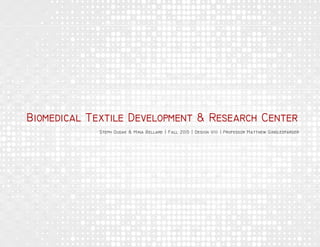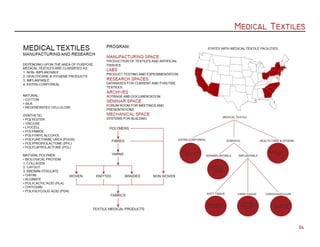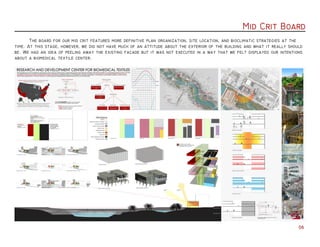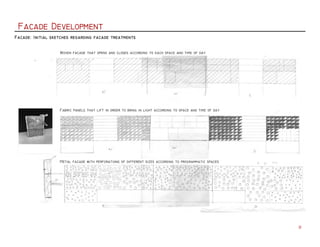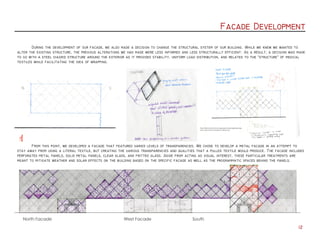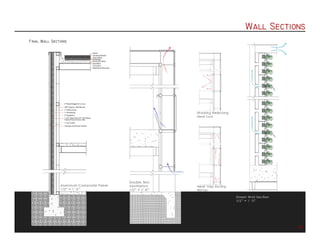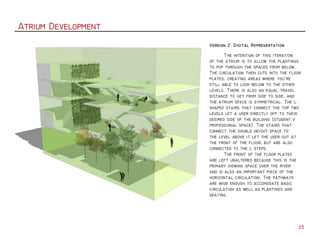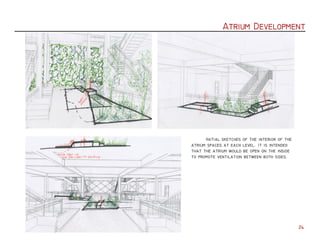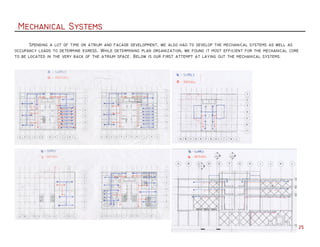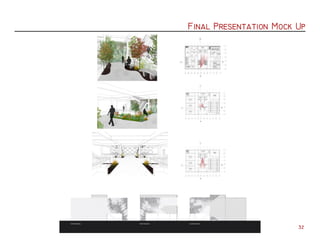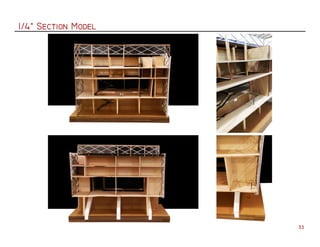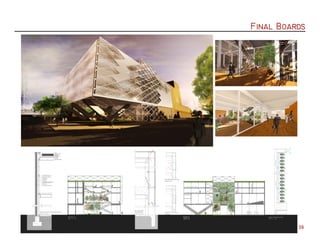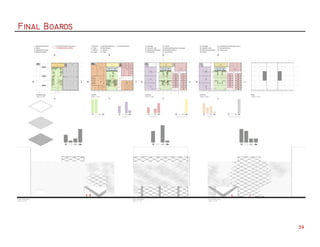The document provides an overview of the design process for a Biomedical Textile Development & Research Center located in Minneapolis, Minnesota. It includes sections on site selection, program development, facade design, structural system, atrium design, mechanical systems, and presentation materials. Key aspects include replacing the existing failing exterior structure with a steel diagrid system to provide rigidity and transparency, designing the facade to "wrap" around the building with varying transparency panels, and including a central atrium space to connect program areas and promote collaboration.
